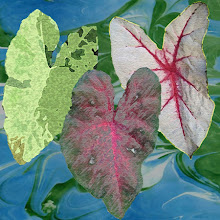 Driving through The Burren (the Rocky District) is a dramatic experience as the landscape in all directions in the northwest corner of Clare county seems to be sweeping hills covered with thick slabs of limestone called clints that look to have been drizzled like silver icing on the earth by some giant confectioner. The deep fissures between the slabs are known as grykes and we came at a time when they were abloom with vivid wildflowers bobbing against the stark hardscrabble pavement, but grasses, ivy, and other vegetation grow readily in the grykes as well, as the moisture collected there provides a rich humid soil. They are like self-watering planters. These fissures have drained the rainfall of centuries to underground rivers, and there are many caves beneath the Burren as well.
Driving through The Burren (the Rocky District) is a dramatic experience as the landscape in all directions in the northwest corner of Clare county seems to be sweeping hills covered with thick slabs of limestone called clints that look to have been drizzled like silver icing on the earth by some giant confectioner. The deep fissures between the slabs are known as grykes and we came at a time when they were abloom with vivid wildflowers bobbing against the stark hardscrabble pavement, but grasses, ivy, and other vegetation grow readily in the grykes as well, as the moisture collected there provides a rich humid soil. They are like self-watering planters. These fissures have drained the rainfall of centuries to underground rivers, and there are many caves beneath the Burren as well.  The ancient people who lived in this stark land were probably farmers who eked out a life on the top soil that originally covered these rock shelves that had been formed by an ancient sea and then due to some seismic shift in Earth's core were forced to the surface, but over the millennium, the soil has been swept away by the winds. What remains are the stones: walls of stones stacked vertically, horizontally, and every which way, in random pattern held together by the laws of physics and gravity, glued only by air and sweat equity that has lasted the ages; ruins of stone forts; cairns; megalithic dolmens; and ancient burial chambers. Where the clints and grykes disperse at the edges of the Burren, the slopes are brilliantly green with vegetation.
The ancient people who lived in this stark land were probably farmers who eked out a life on the top soil that originally covered these rock shelves that had been formed by an ancient sea and then due to some seismic shift in Earth's core were forced to the surface, but over the millennium, the soil has been swept away by the winds. What remains are the stones: walls of stones stacked vertically, horizontally, and every which way, in random pattern held together by the laws of physics and gravity, glued only by air and sweat equity that has lasted the ages; ruins of stone forts; cairns; megalithic dolmens; and ancient burial chambers. Where the clints and grykes disperse at the edges of the Burren, the slopes are brilliantly green with vegetation.We stopped along the way at one of the largest portal tombs in Ireland, Poulnabrone Dolmen, wishing it were sunset and that a tour bus hadn't pulled in behind us, but despite the regrettable chatter in the air, we were awed in the presence of this sacred megalithic monument, wondrous at how possibly the builders of it accomplished their astonishing task of moving, standing, and lifting these huge slabs of stone weighing tonnes, a secret yet to be spoken on the breeze.



No comments:
Post a Comment